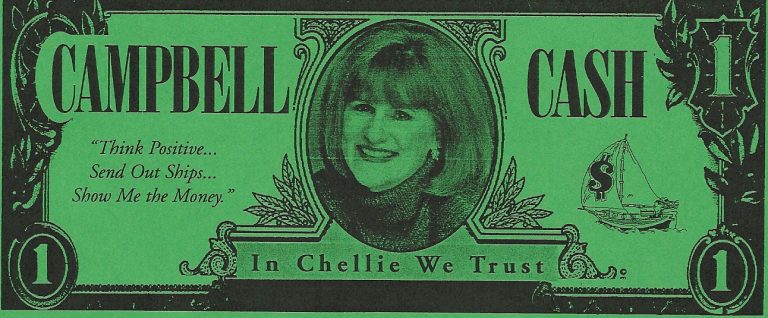144 – May 24
“Certainly there are things in life that money can’t buy, but did you ever try buying them without any money?”—Ogden Nash
Whether you work for yourself and have many clients who pay you, or you have one major client (i.e., you have a full-time job), you have to decide on the price you want to be paid and feel comfortable asking for the money before you can get it.
Make sure you understand the value of what you’re doing for your customer. My dad gave me a great tip when I first started job hunting. He said to me, “The main thing to understand is that anywhere you go to interview for a job, the person behind the desk has only one thought on his mind: How are you going to make him money?” It’s like the old sales motto that every potential customer has one thing on his mind—WIIFM (What’s In It For Me). When you are able to show your boss or client that you are providing the exact products or services that they need and want, they will be happy to pay you what you ask.
Many people make the mistake of thinking they have to keep their price low in order to get the job. Actually, the opposite is often true. A woman I knew was starting her own computer consulting business. She contacted a man who worked in a major corporation who she knew could refer a lot of business to her. He was delighted she had decided to go into business and said he would be glad to refer her. What was her fee, he asked. When she told him $40 per hour, he said, “I’m sorry, I can’t refer you unless you charge at least $75 per hour.” Shocked, she asked him why. He replied that $40 per hour was too cheap and no professional worth his salt would work for so small a sum, therefore people would think she wasn’t any good.
Many people are so afraid that if they charge what they’re worth, they’ll be too expensive and no one will hire them. Certainly, there are customers and companies that want the cheapest personnel they can get. Are those the people you want to work for? I don’t think so. You have to have the guts to say no to these people. Look for someone who’s willing to pay you what you’re worth. If they want what you have, they will pay any price to have it. If they don’t want what you have, free isn’t cheap enough. Make sure that you provide the best quality services available, then you will find there are plenty of people willing to pay top dollar to get top quality.
You have to ask for it, however.
Today’s Affirmation:
“I love to ask for money!”

One week, in the third class of my Financial Stress Reduction 8-week series, we were talking about budgeting and pricing.
“How do you decide what to charge?” the participants asked. “How do you know what is too much? Or too little? How do we know what the market will bear?”
Here’s my guide for pricing:
Find out what others in your profession are charging. Get the top figure and the lowest figure. Then pick a price that is in the “high middle” of that range – studies have shown that to be the most popular price point with most people. They don’t want the most expensive because they want to be “smart money managers” and they don’t want the cheapest because they want to get good value. In the high middle, they figure they’re getting good quality at a reasonable price.
Figure out what you should charge based on your budget. Prepare a monthly budget outlining all your personal expenses, plus savings, taxes, etc. Then do a budget of your business expenses. The total of all your business plus personal expenses is what you need to earn each month.
Do the math. How many people do you need to serve at what price to make the money you want? If you need to make $8,000 per month, you can have 8 clients at $1,000 or 16 clients at $500, or sell 8,000 $1 items or 1,000 $8 items.
Guestimate. Start with a number and see how it goes. You can always sell additional qualtities to make more money, or raise your prices. When I started my workshops back in 1990, I only charged $200 for the first one. I just made that number up with no evidence or research to support it. But it was definitely influenced by a typically female thought which was that I was new at teaching a workshop so I had to make the price rock-bottom. I was 42 years old at that time, a successful business owner who had built a business with as many as 13 employees, and counseled many clients on money matters. Why did I not think all that experience was valuable and priced my workshop accordingly? Nope. Just thought I was new at this so I should make it cheap. Don’t do that!
The initial workshop was successful, and the participants achieved many big financial goals – paid off debts, bought their first home, quit jobs and opened businesses, etc. so I upped my price the next time – to $350. Still low. Then I met a man who taught workshops for $650, and another for $800. So then I raised my price to match what I saw others were charging.
After that, I looked at the results people were getting from taking my workshop, like the woman who closed a $7 million deal a year and a half afterward. That encourages me that whatever I charge under $7 million is a bargain!
Get the picture? You’re worth more than you think!


